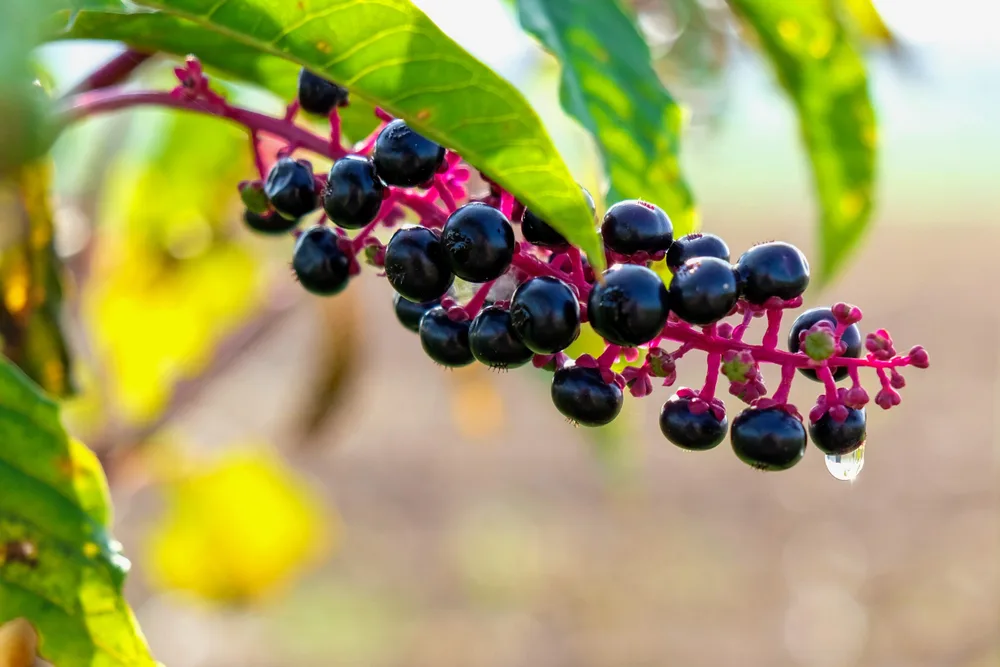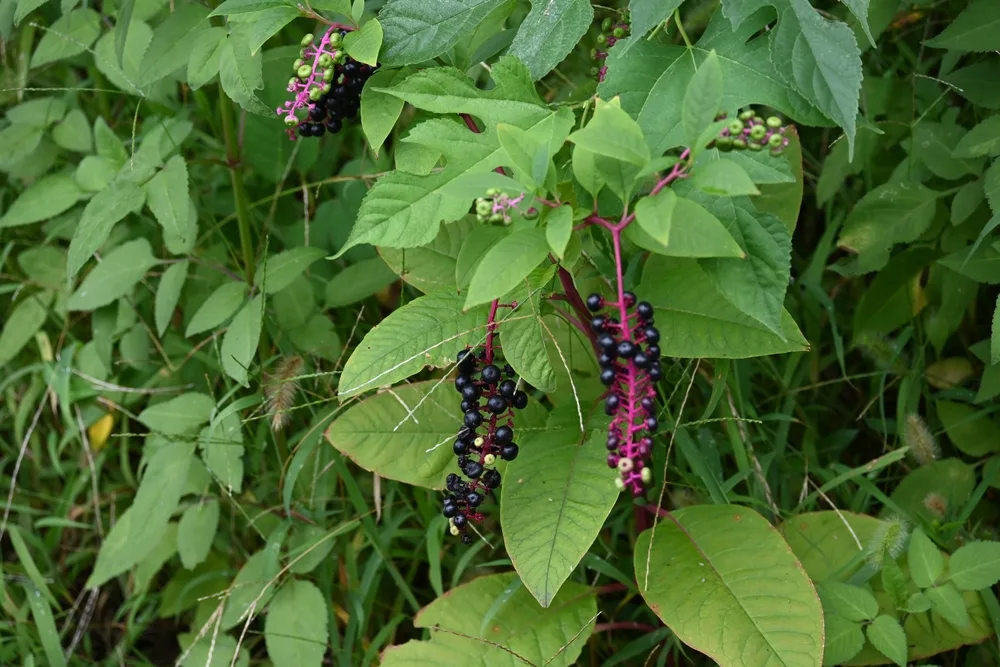
While some toxic plants may add beauty to your garden, keeping them around can be risky, especially if you have kids or pets who might ingest them.
One such plant is pokeweed. Its deep purple berries resemble grape clusters, but consuming even a few can make a child seriously ill.
Although some people use the leaves, stems, and roots of pokeweed for medicinal purposes, improper preparation can lead to severe health issues. The safest approach is to remove this hazardous weed as soon as you spot it in your garden.
Identifying Pokeweed
Pokeweed, also known as pokeberry, can appear almost anywhere in the United States, except for the extreme southern and northern regions.
It thrives in nearly any soil type and doesn’t have a preference for sunlight or shade. The plant can grow between 6 and 10 feet tall, with a pink stem that can reach up to 2 inches in diameter. Its most distinctive feature is its dark purple berries, each about ¼ inch wide.
How to Get Rid of Pokeweed

Eliminating pokeweed can be tough because of its deep taproot, which is difficult to fully remove from the ground.
This makes pulling the weed by hand nearly impossible, as parts of the root are likely to break off and stay in the soil, allowing the weed to regrow.
Moreover, birds can safely eat the berries, spreading pokeweed seeds in their droppings, so it’s best to destroy the plant before or as soon as berries start to form. Given the challenges of pulling it out, you may need to use a chemical herbicide to get rid of it. Glyphosate or dicamba are usually effective in killing pokeweed.
If you prefer to avoid chemical herbicides, try pulling the pokeweed by hand when it’s still very young, as it won’t have developed a deep taproot yet, making it easier to remove most of it successfully.
To prevent any remaining root from sprouting again, cover the area with a thick layer of mulch or dark plastic to block sunlight.
For larger plants, you can cut it down to the stem and then cover the base and roots with mulch or plastic to suffocate it.
What to Do If Pokeweed Berries Are Eaten
If a child eats pokeweed berries, immediately contact Poison Control at 1-800-222-1222 for assistance.
Rinse the child’s mouth with water and give them some milk or water to help dilute the berries’ toxins in the stomach. Symptoms in children may include stomach pain, nausea, vomiting, and diarrhea.
If an adult consumes parts of the root or stem, or if a child has a severe reaction after eating many berries, seek medical attention as soon as possible, as the symptoms could be much more serious.
Pokeweed can also make dogs and cats sick if they eat any part of the plant. While the effects are usually mild, such as drooling and gastrointestinal upset, the animal may refuse food after ingestion.
In severe cases, vomiting, diarrhea, or tremors may occur. Contact your vet for advice on the next steps.
